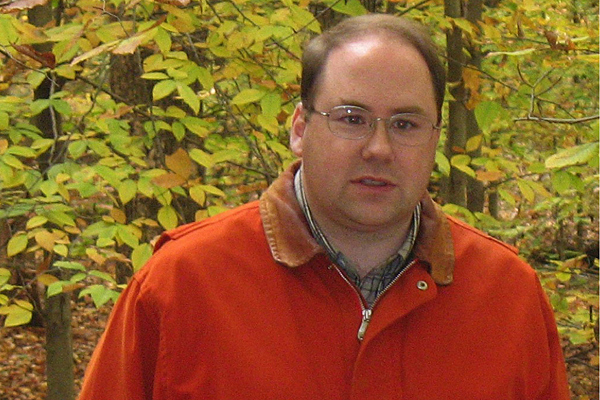Humboldt fellowship
Levia awarded fellowship to conduct research on insect-forest interactions
9:42 a.m., Dec. 19, 2011--On the underside of a beech leaf, there may be small, white clumps that look like cotton candy. Upon closer look, these sticky fibers encase wriggling insects harming the tree’s health – and potentially the surrounding ecosystem.
The University of Delaware’s Delphis F. Levia, associate professor in the Department of Geography with a secondary appointment in plant and soil sciences, recently received a Humboldt Research Fellowship to examine the effects of these tree-damaging insects on forests and the water that flows through them.
Honors Stories
National Medal of Science
Warren Award
“Whether insects, droughts, hurricanes or climate change, all of these things cause stress on our forests,” Levia said. “Our aim is to better understand how pest infestations affect the rainfall that passes through foliage, down tree trunks and into the watershed.”
Given by the German Alexander von Humboldt Foundation to experienced researchers demonstrating excellence in their fields, the prestigious fellowship will enable Levia to spend eight months in Jena, Germany, studying the impact of woolly beech aphids on deciduous woodlands.
Awardees work in cooperation with academic hosts at German research organizations. Levia is partnering with Beate Michalzik of the Friedrich Schiller University, a world-renowned expert on insect infestations.
Their collaboration is an offshoot of a major project Levia completed earlier this year: editing a comprehensive book on forest hydrology and biogeochemistry, or the study of how biological, geological and chemical systems interact in the environment. Michalzik contributed a chapter about insect tree stressors, and their conversations on the topic planted the seeds for this new research.
Their pilot study will help explain how forests react to insect attacks. Woolly beech aphids, which cover themselves in white filaments to ward off predators, feed on tree sap and generate a sugary waste called “honeydew.”
As the aphids munch on leaves, honeydew and other waste products containing carbon and nitrogen get washed to the ground during periods of rain and melting snow. This dissolved material can compromise water quality, and the diminished tree foliage reduces the forest’s productivity in carbon cycling.
Levia suspects that the greater the insect infestation, the more “hot spots,” or areas of intense biogeochemical reactivity, develop beneath the canopy.
Levia will be on sabbatical leave in Germany from January into August 2012 to conduct the study. If data collected yields notable results, Levia plans to expand the study’s scope stateside: The woolly beech aphid is indigenous to both Europe and the eastern United States, including Delaware.
For more about UD’s College of Earth, Ocean, and Environment, in which the Department of Geography is housed, visit the website.
Article by Teresa Messmore












